Traveling with Grace: Jerusalem
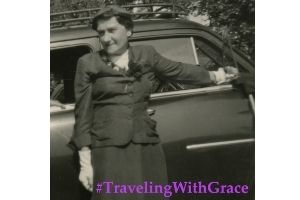
This week we pick back up with Grace’s 1953 trip to Israel. Special thanks go to JMM volunteer Harold Toppall for his transcriptions of Grace’s travel diary.
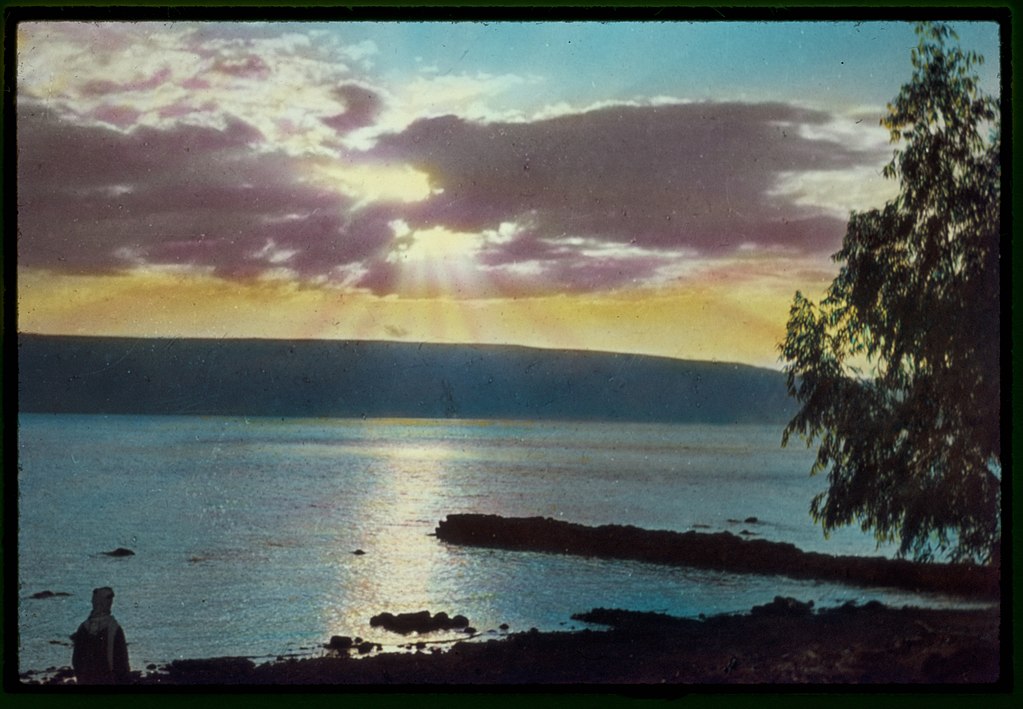
Monday, May 10, 1953
As our room faces the East we saw the sun rise early over the Lake Galilee & were up betimes in order to enjoy the view from the balcony where we ate our breakfast. (Here in Israel they always have a dish of pickles, vegetable salad, cheeses & jellies on the breakfast tray.) Later we sat out in the garden at the water’s edge to wait for Abraham.
A motor launch took some of the guests across the lake to Capermann but we went by car as it was more convenient & we could see many more places of interest. We passed thru the old villages of Magdal, (home of Mary Magdalene) Chamat, & here in the fertile valley of Generaeth they are harvesting tomatoes & there are many banana plantations, orange groves + vineyards. Flowers make splashes of blue, orange, yellow, red & purple everywhere. We are close to the mt. of Beatifudes, where Jesus preached the Sermon of the Mount, & near the water’s edge the little Church of Peter where Jesus performed the miracle of loaves & fishes & told Peter to lay aside his fishing net & become a fisherman of men for the Gospel. Here we see the black fishing nets of present day fisherman hanging between the trees to dry. Abraham has a little French new testament so we stop to read part of it as we go along & this makes the landmarks ever more impressive. We are on the old road which goes to Damascus.
At Capermann we get out of the car & walk among the ruins. Here one of the most extensive excavations is under progress. They have unearthed most of the old Temple with its beautiful columns carved in rich designs of leaves, flowers, menorahs, Shield of David & Star of Solomon, part of figures of lions. We see the stone steps – broken – which once led up to the women’s gallery – marked by a doorway – mosaic floors, the place where they used to take the children to play – you can see marks in the stone pavement where they played games. The stones of the wall are put together without mortar or cement & still solid. We see the benches above the sides where the congregants sat (rather hard & uncomfortable looking.) In the yard are hundreds of broken stone details, parts of the façade, household articles such as vessels for holding oil 7 water, mortars & pestles for grinding grain & pressing oil & wine & troughs thru which they flowed.
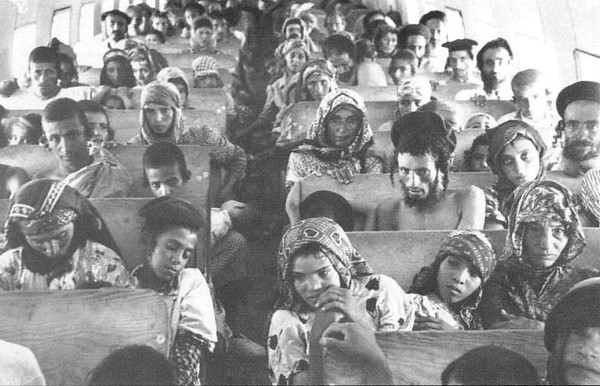
We then returned to the hotel for lunch, afterward beginning a most fascinating journey. We visited Deganya (corn flower) oldest of kibbutzim, where we saw trenches & tanks half buried, souvenirs of the War for Liberation. We stopped at the thermal springs known in Solomon’s days & Abraham poured some of the boiling water over our hands. We wound our way up the steep hillsides & took on a passenger for part of the way (a gentle old Yemenite who came here – operation magic carpet- with nothing & now lives in a neat little house in one of the hill towns. He was dressed in his traditional garb with long head drapery. He was torn & dirty from working in the fields harvesting tomatoes & in his gratitude for the lift insisted sharing his meager little store of tomatoes with us. He seemed hurt when we refused them so we accepted them with thanks. Never have I seen a kinder, sweeter face & when he left us he gave us the biblical blessing. Abraham says these Yemenites have made the most honest successful immigrants in the Yeshuv. We passed close to Har Tabor (Mount of Transfiguration) & saw the monastery built square on the top. This Emek thru which we are passing is (the wheat belt) very fertile & there are many prosperous looking settlements.
In the afternoon we stopped at a little store for orange juiced and Israeli chocolate & a woman from Argentina came over & spoke Spanish to me. The people are all so friendly, even the Arabs whose villages we pass thru & these intrigue me the most as they look so oriental & primitive – more biblical than the rest. We see them travelling on tiny donkeys & large camels saddled with a cushioned seat, & shepherding their flocks of sheep or black goats, the baby ones are so cute. The women folk are veiled & always working, many carrying heavy loads on their heads. I asked Abraham if they ever intermarry with Jews – since they seem to be working amicably with them, & he said he knew of a Jewish woman who married an Arab who later became a Jew, but no Jew married any Arab woman, who is always bought by her husband.
We stopped in Benjamina to pay a short visit to Mrs. Paula Arnold who has a delightful home & beautiful garden (she is a learned naturalist) & she wanted us to have tea with her but we couldn’t spare the time. She is elderly & wears a hearing aid, speaks beautiful English tho a Viennese but father taught in England, & also speaks fluent Hebrew. I enjoyed this meeting very much, regretting lack of time.
We passed the Federal Prison and prison hospital (ambulances are painted with Mogen David) & Abraham says there are about 40 Jewish prisoners & twice as many Arabs. As we approach the rocky hills of Judea we see many forests planted by American National Funds & can distinguish many names of people in American cities memorialized here. We pass the village where Samson came from (Tsora) & the Philistine village of Gara, home of Delilah, in the distance. These Judean hills are rock strewn & they have literally wrested the land stone by stone to make it arable. In the distance are seen towers from the castles & citadels of the Crusaders.
Abraham says that during the recent siege of Jerusalem he travelled this road (where rusting tanks still mark the route) with convoys of food to the beleaguered city where the suffering was very great. Now all looks peaceful & serene in the light of the setting sun yet only a few miles away are the hostile borders of Trans Jordan. They have even taken portions of this main road so the Israelis must make a long detour on the way to Jerusalem. We saw the place where David fought Goliath for the honor of his people. This is truly the Land of the Bible & every inch of it is strewn with historic memories & associations.
International YMCA building, Jerusalem, 1958. Courtesy of the State of Israel’s national photo collection via.
We arrive in the Holy City at nightfall. The lights welcome us, every place looks glamorous at night & the King David Hotel looks truly luxurious. From our balcony we look across to the beautiful international Y.M.C.A. bldg. a mixture of Moorish and western architecture. There is a concert in the lounge after dinner.
Tuesday, May 11, 1953
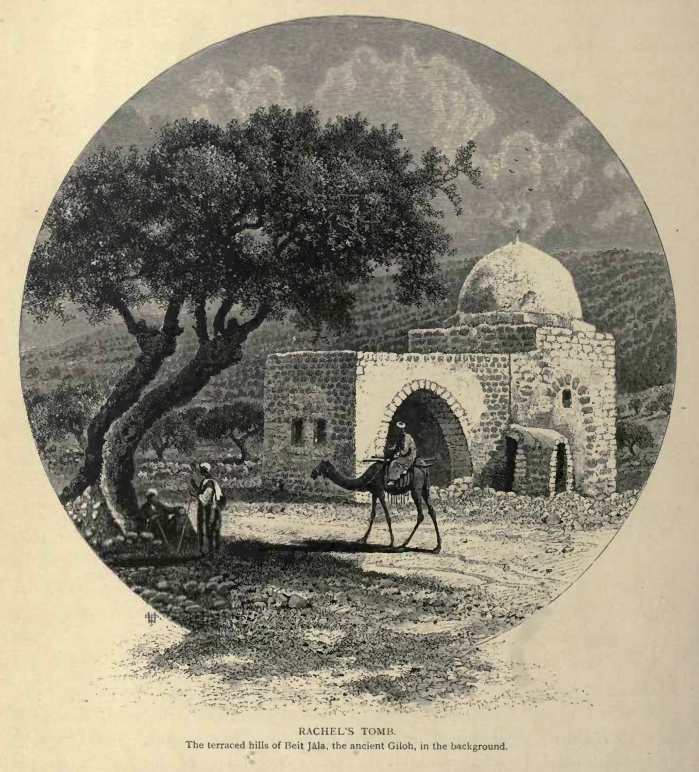
From the beautiful flower hung terrace of the hotel, we look down on a lovely garden. Beyond is a strip of no value land & then the old city. We can also see from here the French, American & Abyssinian Embassies. After lunch, Abraham takes us to Ramat Rachel kibbutz & from here we look across to Rachel’s tomb & above the town of Bethlehem. He says Christian pilgrims who go there come back feeling very badly at the dirty city of their sacred places. We saw the snowy top of Mt. Heruion which lies in alien land. We then went to another spot where we looked across to Mt. Moriah which marks Elijah the prophet’s ascent & garden of Gethsemane, Mt. of Olives, Mt. Zion & Mt. Scopus where the Hebrew University bldgs. are being guarded by Jewish soldiers, all access from the new city having been cut off. We saw the town where Jesus raised Lazarus from the dead. We saw David’s tomb in a cave near the old walls. Luckily Ann had brought her binoculars & as the day is clear we see very well in the distance, the old walls, the Citadel of David, the Church of Dormition – where Mary is said to have passed away, all this & more we see softened by the distance which may be a kindness since the poverty & squalor are hid from view. Here Abraham swapped our pictures with a young Yemenite.
We then drive to the new city which though modern, neat & beautiful (all bldgs. of white stones of Judean Hills) nevertheless bears many scars from the recent conflict. The business area looks prosperous. It is interesting just to park on the street & watch all types of people – Arabs, Yemenites, Europeans, Americans, Orientals, – pass by. We saw the old Bezalel museum, the govt. offices in temporary quarters (they are building a new Knesset) the post office, the university housed in a Catholic bldg., Terra Sancta, up to the pretty residential section – again the flowers & green parks everywhere – & visited Dr. Hillel Blondheim whose cute little son is bi-lingual as are most Israeli children. Abraham dined with us tonight.
Wednesday, May 12, 1953
Today we called on Dr. & Mrs. Biran (the former who is governor of Jerusalem) phoned me this morning for an appointment as Debby Cohen had written him I was coming. They are a very nice cordial couple & live modestly in a small apt. house. Then we went to Hadassah headquarters to see Mrs. Grynwald who had twice called at the hotel, but she was not there so I talked to her secretary Miss Goodman, a charming English woman who has become an Israeli citizen. She explained to us the work of Hadassah which trains young women for various occupations & given them guidance. She sent special regards to Anna Samuels & Helen Lusterman.
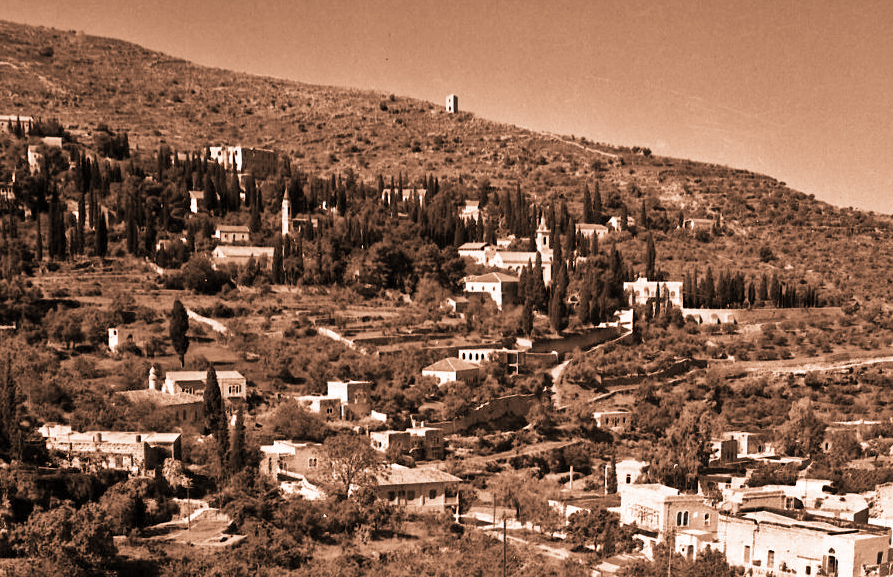
We then drove out to Ein Karem where John the Baptist & Elizabeth lived & where Mary visited them. The Church of the Visitation marks the spot. The country round about is very beautiful, terraced hills & vineyards, stately cypress &olive & fig tills, tiny villages, here & there the ruins of a crusader’s stronghold. They are building a large dam in this neighborhood. Returning to town, we saw the hill on which Hertzel is buried. They are landscaping it into a beautiful park.
We saw the Home for Orphan Girls (to which I have been contributing) & the Home for the Blind (where they have dogs sent from America) both fine looking institutions. We visited an interesting museum showing the growth, development & natural resources of the country, mineral, agricultural, etc. In Jerusalem we visited the orthodox section of the city where the men all wear “pais” side curls, long coats, the women have their heads covered & little girls wear heavy olive drab hose.
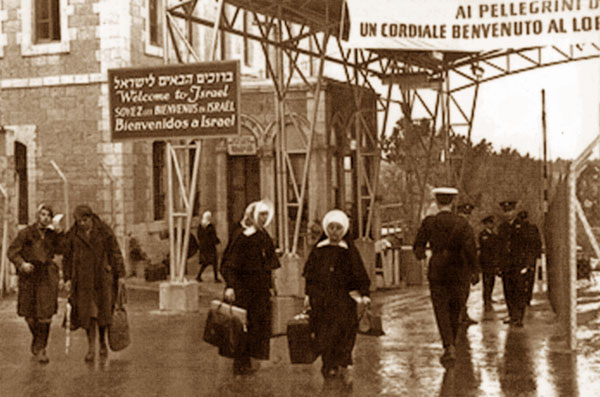
We see the Mandelbaum gate thru which people used to pass into the old city. Hereabouts is evident much destruction & one street is full of rubble. Abraham took us to an art store where we saw the most gorgeous things, ritual objects, jewels, antiques of all kinds, paintings, porcelains, Yemenite wedding bonnets & curiously wrought wedding rings, priceless things which the proprietress (a Dane who fell on Ann’s neck when she recognized a landsman) explained to us & told their interesting histories & let us examine the intricate, tiny details thru a magnifying glass. Although she sells the wares, it is really a sort of museum & everyone comes in to look, a pity it is so small & crowded. In the hotel tonight, I bought a beautiful blouse of Yemenite work.
Thursday, May 13, 1953
Up betimes & on the road to Lydda we saw the picturesque town of Emmaus with a beautiful Church of Visitation crowned by a large marble statue of the Virgin & Child. Here Arabs & Jews live together & in the forefront of the town is seen the sumptuous house of the Sheikh (Abraham says he has 30 some wives). We pass the spot where Samson fought the lion & made the riddle of the Lion & the honey. Incidentally, bee culture is quite an industry in Israel & the honey is very good.
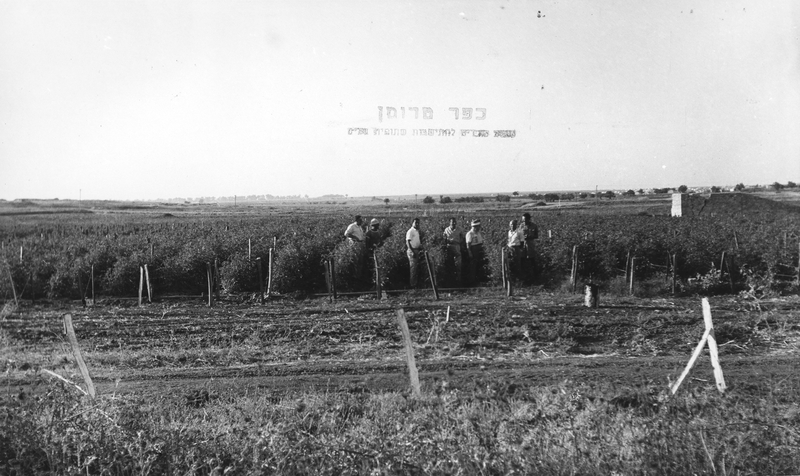
One day on the road, we saw many cows on one side, on the other many apiaries, so I said, “Here is the land of milk & honey.” At 10 A.M. we say a regretful farewell to this remarkable land, crossroad of the east & west, a melting pot where many people from many lands are building a new home, living together in friendliness with a new found common language (for instance we saw one kibbutz of Americans name for President Truman, another which the Czechs named for Mazyrick) & all working hard for one goal to build a better, richer, more enlightened community for their children.
Thanks for reading “Traveling with Grace,”a series where we’re sharing (and annotating) posts from the travel diaries of Grace Amelia Hecht, native Baltimorean, b. 1897 and d. 1955. As mentioned in myintroductory posttranscription errors sometimes occur and I’ve made my best guesses where possible, denoted by [brackets]. – Rachel Kassman, marketing manager
